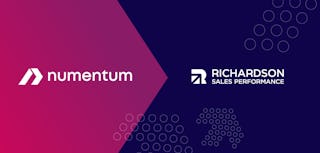How to Build a Dynamic Sales Process
Sales management

In recent years, the viability of using a defined sales process has come into question. Many selling organisations cite increased complexity and fluidity in selling as reasons for abandoning the perceived rigidness of a prescribed sales process.
This position is understandable. Factors like the broader availability of information, an increasing number of stakeholders and a changing economy have all made selling a more iterative enterprise. Despite these changes, high-performing organisations find a sales process to still be important to their success, as long as it is a dynamic sales process.
The concept of a dynamic sales process can be confusing because it seems to represent a juxtaposition; a “process” is usually a fixed series of steps, but “dynamic” signifies fluidity. How can these two coexist? The answer: the two can coexist with the use of situational fluency.
Situational fluency is the demonstration of knowledge, skills and attitude that today’s demanding buyers expect in their interactions with sales professionals. Situational fluency can unite what is process-driven and what is dynamic because it allows the sales professional to adapt parts of the process to specific customer needs. In this setting, the sales approach remains strategic enough to be a process but flexible enough to be dynamic.
Moreover, a dynamic sales process addresses the non-linear nature of selling today. It is an approach that enables the sales professional to recognise where the buyer is in their purchase assessment and adjust accordingly.
While this methodology makes intuitive sense, one question remains: how does an organisation put a dynamic sales process into effect?
Here, we offer three key steps for doing so.
Define the Optimal Customer Experience
Too often, the sales process design is based on activities that help the sales professional but not the buyer. This is a problem not only because it ignores the customer, but also because it fails to address the intensified expectations held by modern buyers. Today’s buyers expect a rapid response. More stakeholders are involved in the purchase process. Individuals come and go throughout a buying evaluation, making it difficult to track the progress of the sale. All of these characteristics put increased stress on a sales process.
With so many moving parts in modern buying decisions, sales leaders must arrive at a concrete definition of an optimal customer experience. This approach rallies the sales team around a single, cohesive approach to the market. More importantly, defining the optimal customer experience addresses one of the determining factors in successful selling: the customer’s quality of interaction with the sales team. In fact, according to research from PwC, the quality of interaction with the sales team is so influential that a great experience offers “a 16% price premium on products and services, plus increased loyalty.”
When defining the optimal customer experience, sales leaders and sales professionals must consider how their approach to the process is differentiated. They must ask: how do I create a unique experience that is going to make us valued and appreciated by customers?
This question is critical because buyers are more empowered than ever. They have access to limitless information, which often leads to confusion. As a result, often the best thing sellers can provide is clarity.
Simply, the optimal buyer experience is one in which the sales professional can demonstrate they are acting in the buyer’s best interest and not their own. Doing so is more difficult than it sounds because sales professionals are under pressure to perform and naturally want a quick sale.
The Next Steps:
- Interview top performers when defining the optimal sales process always. This approach gets their “fingerprints” on the final definition, which creates buy-in while building credibility with other sales professionals on the team.
- Share the process definition with a sample of sales professionals who reside in the middle of the performance curve and solicit their input. This is where an effective definition yields the most results.
- Remind the sales team that a definition of optimal selling behaviour prevents the common default of listing features and competing on price, which is not effective or sophisticated.
Create a Coachable Framework
A coaching cadence is what enables a dynamic sales process to be flexible because a sales leader can lend assistance when the components of the defined process do not fully align with what is happening during a complex opportunity.
This management by exception style of coaching has many benefits. With a coachable framework, sales leaders can forecast selling outcomes with greater accuracy. At the same time, a dynamic sales process enables sales professionals to pursue business without excessive amounts of time spent in opportunity reviews. Consider that some sales managers spend 2-3 days a week reviewing pipelines to predict sales and generate forecasts. They feel they need to invest this amount of time to ensure accurate predictions and results. However, with established standards for a sales process, leaders can quickly gauge, at scale, how opportunities are developing under the framework and focus on the exceptions that need specific attention.
With a standard in place, the organisation can even create playbooks that outline the optimum approach for various scenarios. In this setting, the CRM system, rather than individuals, can produce accurate forecasts. As a result, the sales leader becomes more effective because they can devote time to exploring what resources must be brought to bear, rather than on analysis and inspection. This is a more productive management approach than constantly stepping in during the final stages of the sale to frantically attempt to push deals across the line.
Sales leaders must remember that top performers may resist coaching activities that reinforce a formalised sales process. This resistance is due to the fact that many top performers have an intuitive understanding of how to sell, and they view a process-driven approach as a distraction from what has worked for them. Here, sales leaders can be effective by helping top performers see that the process definition merely articulates what they already do, making the keys to their success explicit, rather than simply intuitive.
The Next Steps:
- If the process begins to feel too rigid, sales leaders should coach sales professionals to explore the “why” behind the next step. For example, if the next phase of the process is a product demo, sales professionals should first consider asking the customer how a demo will help them in their decision.
- When building a process, sales leaders must articulate to their team what matters behind each step.
- Avoid the default approach in which sales leaders focus on recommending that sales professionals do what worked for them. Ensure that sales leaders refrain from becoming just “advice givers.”

Sales Process Consulting & Training
Discover how our consultative approach to sales process and development training helps organisations match their sales process to their customer's needs.
Learn MoreBuild a Process with Layers Not Steps
Problems arise when a sales organisation creates a process designed to cover every buying scenario. This approach leads to a complex “if/then” analysis and makes the process definition unwieldy and difficult to navigate.
Rather than attempt to create a complex process that can address all scenarios, sales leaders should seek to address the most common scenarios. This strategy dramatically limits the number of steps involved. If there is an opportunity in which the process doesn’t fully apply, then adjustments can be made in the moment, relevant to that exceptional opportunity. These opportunities require some creativity, but they are on the margins. The key is to use as few steps as possible but no fewer than what is needed.
With a layered approach, the sales professional has a method for gradually digging deeper with the customer to unearth unseen challenges and needs. Each phase in a dynamic sales process should include a verifiable outcome, which is a behaviour that shows the degree of alignment between a buyer and a sales professional. By defining a verifiable outcome for each phase and observing that they have occurred, the sales organisation can prove that they are aligned with the customer throughout their buying evaluation. For example, a sales professional might send a summary of a conversation to a customer to seek verification that their understanding accurately reflects the outcomes of the discussion.
This kind of engagement helps customers to progress to the next phase of their decision process. Verifiable outcomes enable sales professionals to confirm that the customer understands the cost of inaction and how far they will fall behind competitors if they do not act. Finally, a layered approach to sales process design removes a sales professional’s inclination to focus on activity, rather than outcomes.
The Next Steps:
- Consider how to automate a buyer-aligned dynamic sales process within the CRM system, which can provide feedback based on where the customer is in the process.
- Create a buyer-aligned sales process that covers the most typical buying scenarios but not every conceivable type.
- Ensure that the layers address both the “what to do” to the “how to do it” by articulating how it has worked in real opportunities with case studies and playbooks.
Building a dynamic sales process means developing a clear and shared definition of the optimal customer experience, focusing coaching activities on a common framework and creating a simplified, layered process that addresses most opportunities.
Though the buying process is iterative, complex and changing, stakeholders make decisions in a rational manner governed by process. Therefore, the sales professional also needs a dynamic, flexible process to align with the customer accordingly.

White Paper: Embracing The Turns, The New Buyer Journey
DownloadGet industry insights and stay up to date, subscribe to our newsletter.
Joining our community gives you access to weekly thought leadership to help guide your planning for a training initiative, inform your sales strategy, and most importantly, improve your team's performance.






